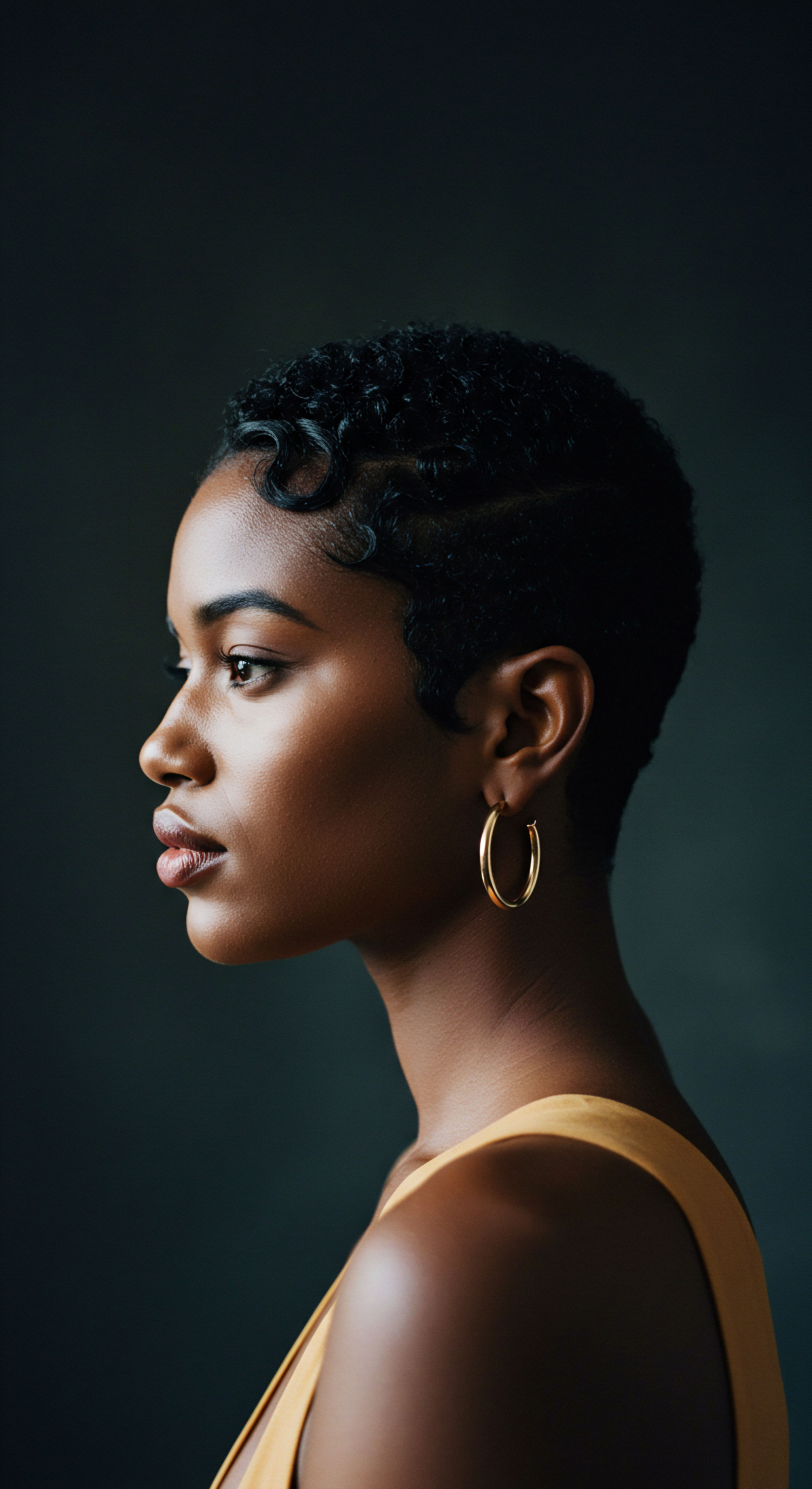
Roots
Consider for a moment the quiet whisper of water over ancient stones, or the rustle of leaves in a forgotten forest. So too does the story of hair unfold, a living chronicle of our connection to the earth and its bounty. Before bottles lined our shelves, before scientific labels adorned our treatments, our ancestors understood hair with an intuition born of observation and generational wisdom.
They knew its texture, its thirst, its tendency to resist or to yield. This primal understanding, deeply woven into the fabric of daily life, holds profound lessons for our modern pursuit of hair health, particularly when we consider something as fundamental as pH balance.
The very structure of our hair, from the innermost medulla to the protective outer cuticle, is a marvel of biological engineering. Each strand, a testament to resilience, carries within it a delicate chemical equilibrium. The scalp, too, maintains its own protective acidic mantle, a subtle shield against environmental aggressors and microbial overgrowth.
This natural acidity, typically resting between 4.5 and 5.5, plays a quiet yet powerful role in keeping the cuticle scales smooth and sealed, locking in moisture and bestowing a healthy sheen. Disrupting this balance can lead to a cascade of concerns, from dryness and brittleness to irritation and a dull appearance.

Hair Anatomy and Its Chemical Balance
To truly appreciate the wisdom of old ways, we must first understand the foundational biology of hair. The hair shaft, though seemingly simple, comprises three main layers ❉ the medulla, the cortex, and the cuticle. The outermost layer, the Cuticle, consists of overlapping scales, much like shingles on a roof.
When these scales lie flat, the hair appears smooth and shiny, reflecting light beautifully. When they lift, perhaps due to alkaline environments, the hair can feel rough, appear dull, and become prone to tangling and breakage.
The Cortex, nestled beneath the cuticle, contains the majority of the hair’s mass, including keratin proteins and melanin, which gives hair its color. The integrity of these proteins is influenced by pH levels. Extreme deviations, either too acidic or too alkaline, can denature these proteins, compromising the hair’s strength and elasticity. This delicate protein structure demands a nurturing environment, one that respects its inherent chemical needs.
Hair’s vitality hinges on a precise pH equilibrium, a truth understood across generations, long before laboratory measures.

Understanding Hair PH
The term pH, or “potential of hydrogen,” quantifies the acidity or alkalinity of a substance on a scale from 0 to 14. A pH of 7 is neutral, below 7 is acidic, and above 7 is alkaline. Our hair and scalp are naturally acidic, a condition that supports the cuticle’s integrity and discourages the proliferation of certain microorganisms. This natural acidity forms a protective barrier, guarding against moisture loss and external damage.
Traditional hair care practices, often relying on plant-based ingredients and natural processes, implicitly honored this pH balance, even without explicit scientific understanding. Their methods, passed down through generations, often resulted in hair that was strong, supple, and radiant, suggesting an intuitive alignment with the hair’s biological needs.
- Hair Cuticle ❉ The outermost protective layer, highly sensitive to pH shifts.
- Scalp Acid Mantle ❉ A natural protective barrier, ideally maintained between pH 4.5 and 5.5.
- Protein Integrity ❉ Hair’s strength relies on stable protein structures, vulnerable to extreme pH.
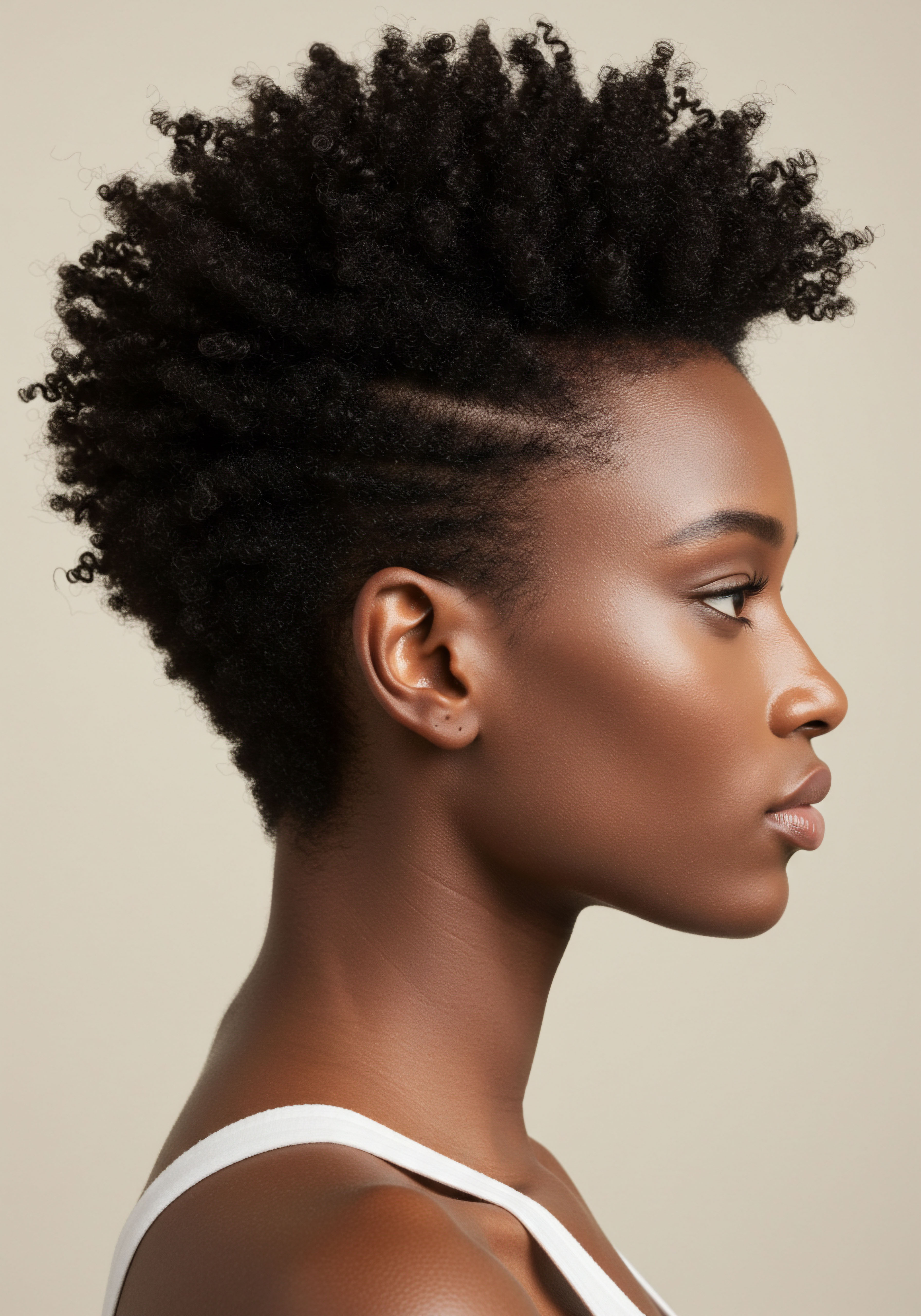
Ritual
As we step from the foundational understanding of hair’s inherent chemistry, our attention turns to the practices, the gentle gestures, and the deliberate choices that once shaped hair health. These were not merely routines; they were rituals, deeply ingrained in cultural heritage and daily rhythms. They speak to a practical wisdom, a tactile knowledge of what hair truly needed to flourish. This section invites us to explore how these ancestral rituals, seemingly simple, held within them a sophisticated understanding of pH balance, offering practical wisdom for our modern hair care journeys.
Many historical hair care practices, from the fermented rinses of East Asia to the acidic fruit washes of certain African communities, inadvertently maintained or restored the hair’s optimal pH. They utilized ingredients readily available in their natural environments, transforming them through processes that often yielded mildly acidic solutions. This contrasts sharply with some modern cleansing agents that, while effective at stripping dirt and oil, can leave the hair cuticle raised and vulnerable due to their higher alkalinity.
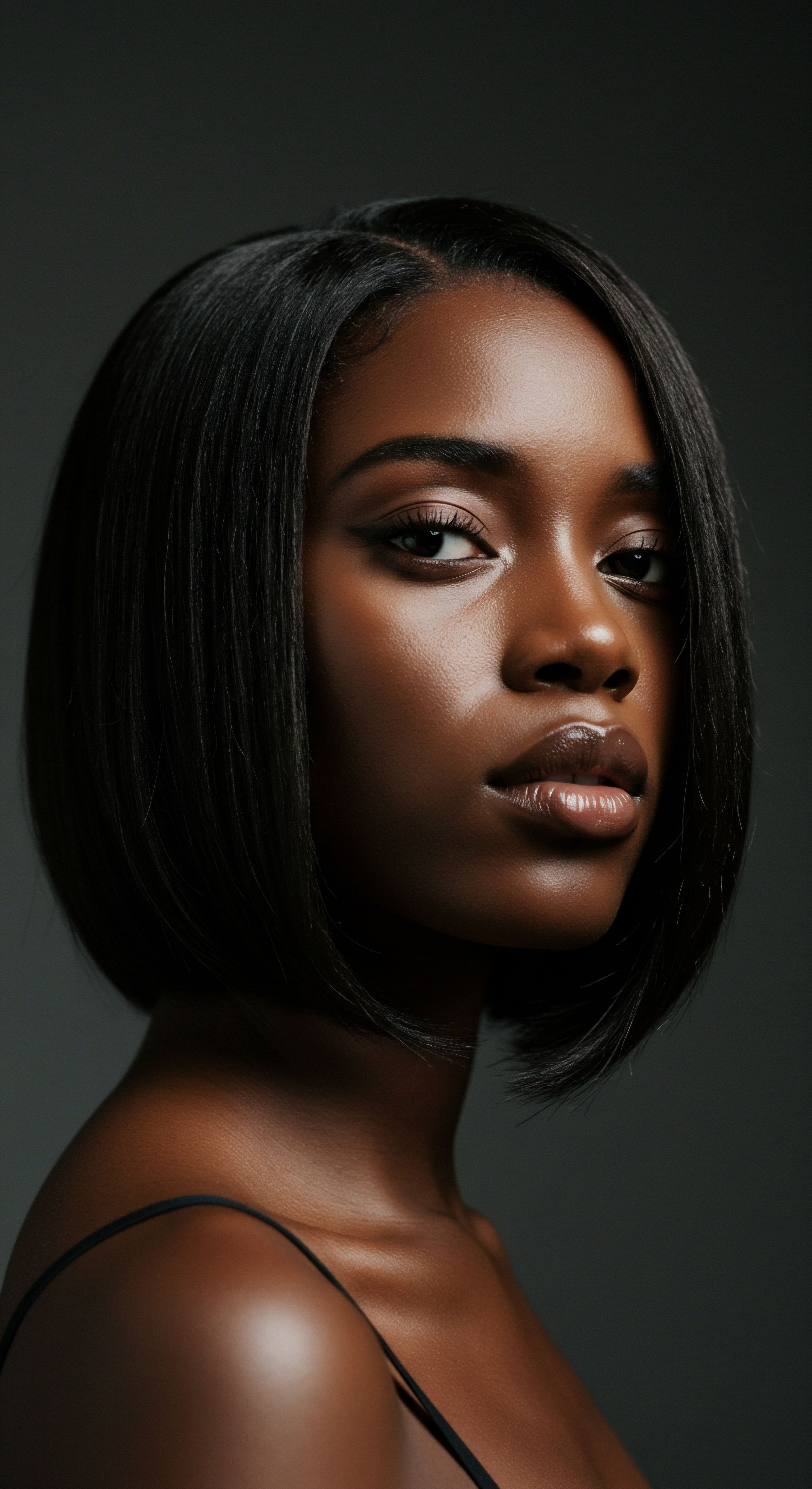
Traditional Cleansing Methods and Their PH Impact
Consider the widespread use of natural cleansing agents. In various parts of Africa, for instance, traditional soaps derived from plant ashes, such as African Black Soap, were employed. While these soaps can be quite alkaline in their raw form, their application was often followed by acidic rinses or the use of conditioning agents like shea butter, which would help to mitigate the pH impact and restore balance. The complete ritual, rather than a single step, provided the holistic care.
Across Asia, the practice of washing hair with Fermented Rice Water has persisted for centuries, particularly among groups like the Yao women of Huangluo Village in China, renowned for their exceptionally long, strong hair. Scientific investigation into this practice reveals a fascinating alignment with modern pH principles. A review by Siti Fairuz Ramli and colleagues (2022) notes that fermented rice water typically possesses a pH value between 4.5 and 5.5.
This slightly acidic range closely matches the natural pH of the hair and scalp, making it an ideal rinse for smoothing the cuticle, reducing friction, and enhancing shine. This empirical observation, passed down through generations, speaks volumes about the intuitive understanding of what hair truly needs to thrive.
Ancestral rituals, often involving natural ingredients and deliberate sequences, implicitly supported hair’s pH harmony.
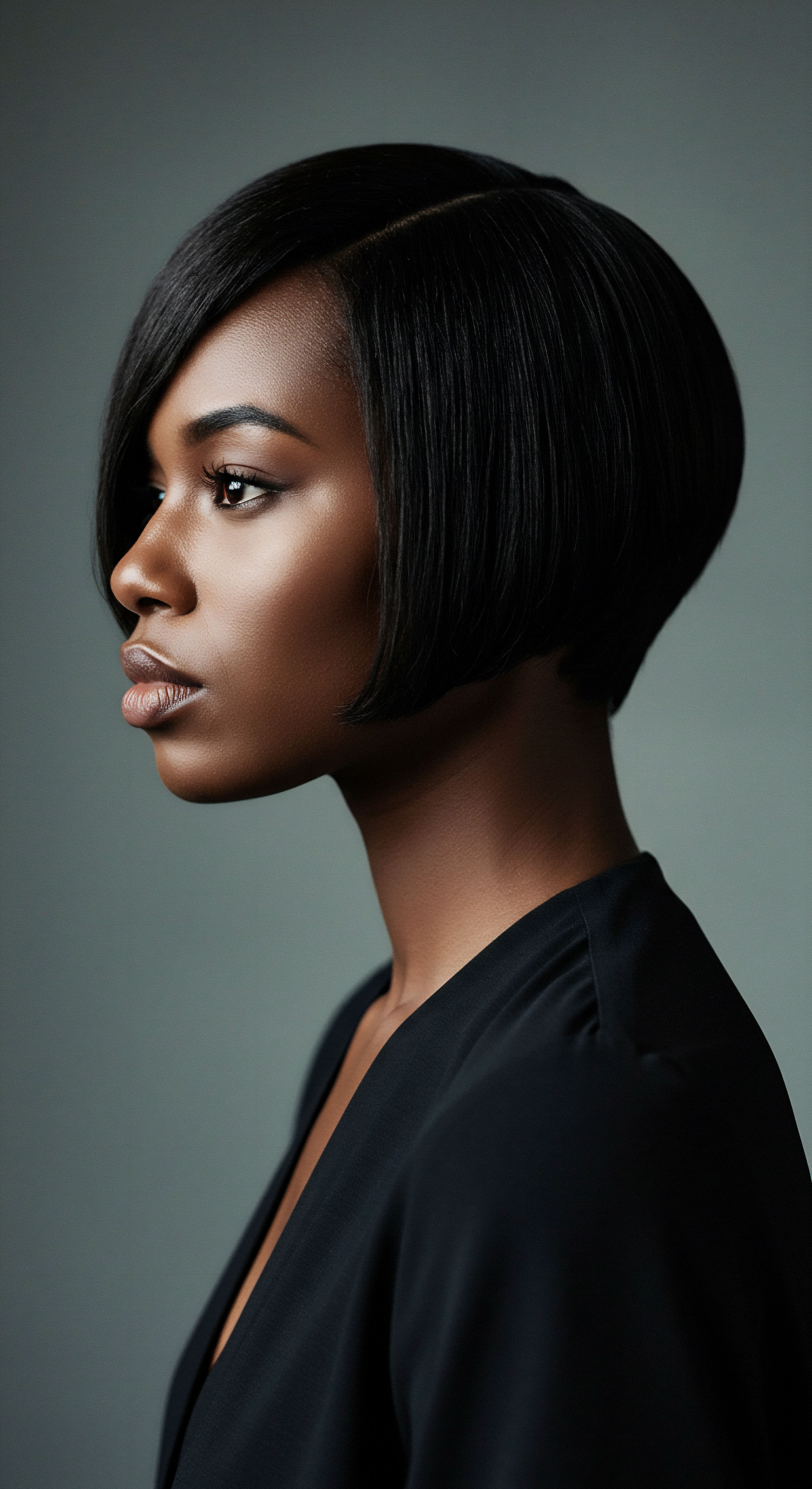
Acidic Rinses and Their Historical Role
Beyond fermented grains, many cultures utilized other acidic ingredients as hair rinses. In ancient Rome, vinegar was a common additive to hair washes, valued for its purported ability to add shine and cleanse. Similarly, various fruit juices, such as lemon or lime, were used in warmer climates to brighten hair and condition it. These practices, while perhaps not understood in terms of specific pH numbers, demonstrate an intuitive grasp of how acidic substances could benefit hair health.
The effect of these acidic rinses on the hair cuticle is noteworthy. When hair is cleansed with an alkaline substance, the cuticle scales lift. A subsequent acidic rinse helps these scales to lie flat again, sealing the cuticle and protecting the inner cortex.
This action minimizes moisture loss, reduces frizz, and provides a smoother surface that reflects light, contributing to a healthy appearance. The ritualistic layering of cleansing and conditioning, often involving these pH-balancing rinses, is a powerful lesson for contemporary routines.
Consider the simplicity of these historical methods. They did not require complex formulations or synthetic compounds. Instead, they relied on the natural properties of plants and the wisdom of preparation. This highlights a fundamental truth ❉ effective hair care need not be complicated.
- Fermented Rice Water ❉ A traditional rinse with a naturally acidic pH, known for cuticle smoothing.
- Vinegar and Citrus Rinses ❉ Historically used to add shine and help restore hair’s natural acidity.
- Traditional Plant-Based Cleansers ❉ Often followed by balancing agents to mitigate alkalinity.
| Ingredient Category Fermented Grains (e.g. Rice) |
| Historical Use Rinses, conditioners for shine and strength |
| General PH Implication Mildly Acidic (4.5-5.5) |
| Modern Parallel pH-balanced conditioners, acid rinses |
| Ingredient Category Fruit Acids (e.g. Lemon, Vinegar) |
| Historical Use Shine rinses, detanglers |
| General PH Implication Acidic (2.0-3.0 for undiluted) |
| Modern Parallel Apple cider vinegar rinses, acidic leave-ins |
| Ingredient Category Plant Ashes/Saponins (e.g. African Black Soap) |
| Historical Use Cleansers, soaps |
| General PH Implication Alkaline (8.0-10.0+) |
| Modern Parallel Alkaline shampoos (often followed by acidic conditioner) |
| Ingredient Category Oils/Butters (e.g. Shea, Coconut) |
| Historical Use Conditioners, sealants, pre-poo |
| General PH Implication Neutral to slightly acidic |
| Modern Parallel Leave-in conditioners, hair oils |
| Ingredient Category Many historical practices used a combination of ingredients to achieve balance. |
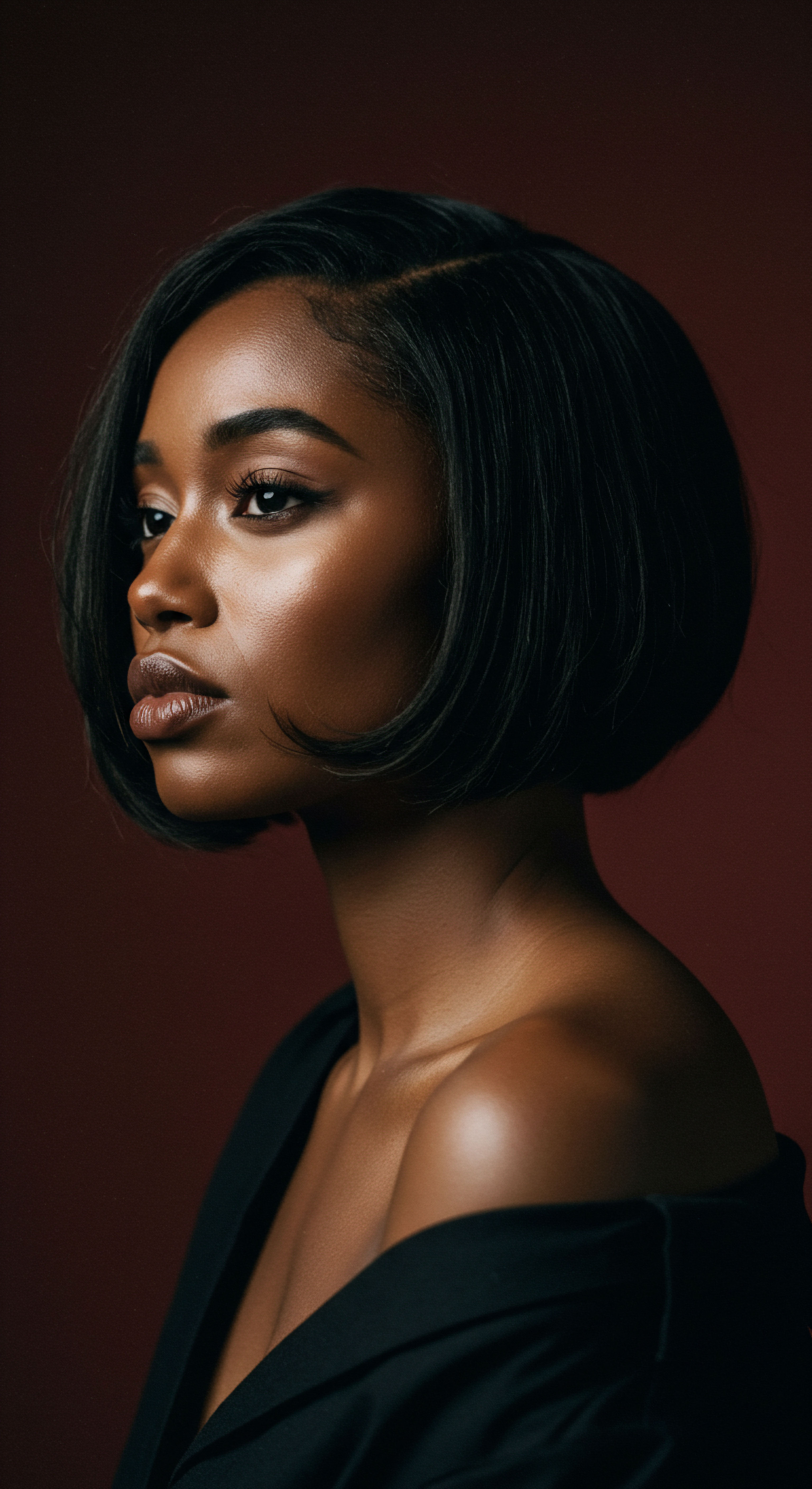
Relay
How might the subtle dance of historical hair care wisdom, particularly concerning pH, truly inform our contemporary understanding? The conversation extends beyond simple recipes, inviting us to consider the profound interplay of science, cultural heritage, and the evolving needs of textured hair. This exploration seeks to bridge the gap between ancient intuition and modern scientific rigor, revealing how past practices offer more than just anecdotal charm; they provide a framework for a deeply intelligent approach to hair wellness, especially for the unique needs of curls, coils, and waves.
The modern hair care landscape, with its vast array of products, often simplifies the complex relationship between product pH and hair health. While many products are now formulated to be pH-balanced, a deeper understanding of why this matters, and how historical practices achieved similar outcomes, can guide us toward more conscious choices. The textured hair community, in particular, benefits immensely from practices that preserve moisture and cuticle integrity, given the inherent structural characteristics of these hair types.

Why Does PH Matter for Textured Hair?
Textured hair, with its unique helical structure, presents a larger surface area and often has a more lifted cuticle naturally compared to straight hair. This structural characteristic makes it inherently more prone to moisture loss and vulnerability to external aggressors. Products with an imbalanced pH, particularly those that are highly alkaline, can exacerbate these tendencies. An elevated pH causes the cuticle scales to lift further, leading to increased porosity, dryness, and a greater propensity for tangles and breakage.
Conversely, maintaining the hair and scalp within their natural acidic range helps to keep the cuticle smooth and sealed. This reduces friction between strands, minimizes moisture evaporation, and enhances the hair’s natural elasticity. For textured hair, where retaining moisture is paramount, a pH-balanced regimen becomes a cornerstone of health and vitality.
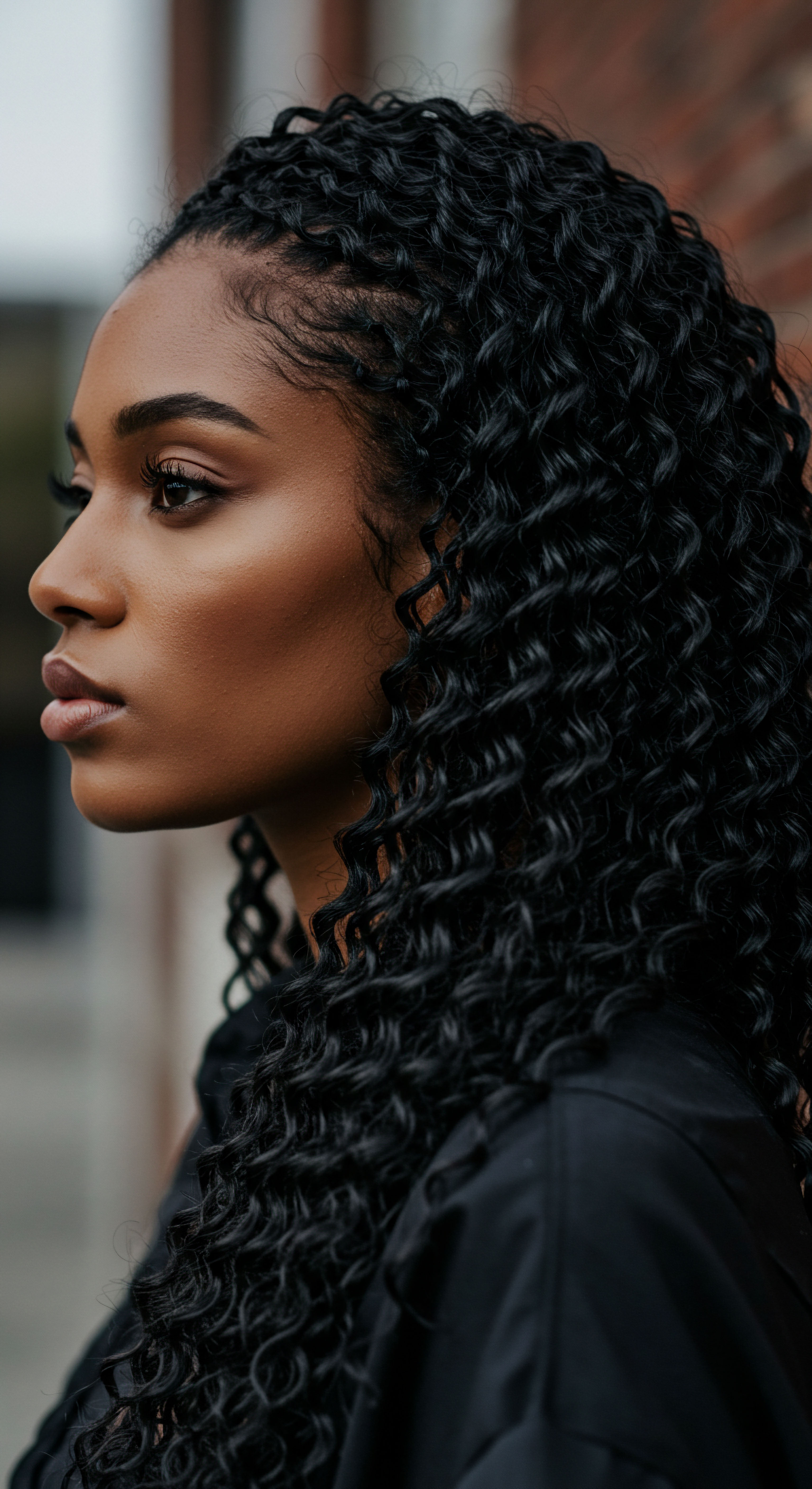
Can Modern Science Validate Ancient PH Wisdom?
Indeed, modern scientific inquiry often validates the efficacy of traditional practices. The very concept of the Acid Mantle, a protective film on the skin and scalp with a slightly acidic pH, is a modern dermatological understanding that aligns with the beneficial outcomes observed in historical acidic rinses. This mantle acts as a defense against bacterial and fungal growth, and its disruption through overly alkaline products can lead to scalp irritation, dryness, and conditions like dandruff.
For example, studies on the effects of different pH levels on hair demonstrate that alkaline solutions cause the hair fiber to swell and the cuticle to open, increasing its negative charge and susceptibility to damage. Acidic solutions, on the other hand, help to compact the cuticle, reduce swelling, and restore the hair’s natural anionic charge, which helps to minimize frizz and enhance smoothness. This scientific understanding directly supports the historical preference for acidic rinses after cleansing, even if the ancients lacked the terminology of pH.
Bridging ancestral intuition with contemporary science offers a powerful framework for hair wellness, especially for textured strands.

Cultural Sensitivity and Modern Adaptation
As we draw lessons from historical practices, a thoughtful approach is essential. We must acknowledge the cultural contexts from which these practices emerged, respecting their origins and avoiding superficial appropriation. The goal is not to simply replicate old methods but to understand the underlying principles that made them effective and then adapt those principles using modern knowledge and resources.
For instance, while a traditional plant ash soap might have been highly alkaline, the accompanying conditioning rituals and the overall lifestyle of the people using it contributed to healthy hair. Modern formulations, by contrast, can achieve effective cleansing at a much gentler pH, minimizing the need for drastic post-wash adjustments. However, the lesson remains ❉ cleansing is only one part of the equation; restoring balance is the other.

What Are the Practical Takeaways for Daily Care?
The insights gleaned from historical pH-balancing practices offer several practical applications for contemporary textured hair care ❉
- Mindful Cleansing ❉ Opt for shampoos that are pH-balanced (typically between 5.5 and 6.5) to cleanse effectively without excessively stripping the hair or disrupting the scalp’s acid mantle.
- Acidic Rinses ❉ Incorporate occasional diluted apple cider vinegar (ACV) rinses or other acidic hair rinses (like those with hibiscus or roselle) into your routine, especially after deep cleansing or if your hair feels rough. This helps to seal the cuticle and add shine.
- Conditioning and Leave-Ins ❉ Prioritize conditioners and leave-in products formulated at an acidic pH (3.5-5.5) to help smooth the cuticle, detangle, and provide lasting moisture.
- Holistic View ❉ Consider your entire hair care regimen as an interconnected system. The pH of each product, from cleanser to styler, contributes to the overall balance and health of your hair.
| Product Type Alkaline Shampoos (Traditional/Strong) |
| Typical PH Range 8.0 – 10.0+ |
| Impact on Hair Causes cuticle swelling, can strip hair |
| Product Type pH-Balanced Shampoos |
| Typical PH Range 5.5 – 6.5 |
| Impact on Hair Cleanses gently, maintains cuticle integrity |
| Product Type Conditioners |
| Typical PH Range 3.5 – 5.5 |
| Impact on Hair Helps flatten cuticle, detangles, adds shine |
| Product Type Leave-In Conditioners/Stylers |
| Typical PH Range 4.0 – 6.0 |
| Impact on Hair Maintains moisture, provides light hold, cuticle support |
| Product Type Acidic Rinses (e.g. Diluted ACV) |
| Typical PH Range 2.5 – 3.5 (when diluted) |
| Impact on Hair Closes cuticle, adds shine, removes buildup |
| Product Type Selecting products within appropriate pH ranges supports hair health. |
The wisdom of our ancestors, observed through the lens of modern science, illuminates a path toward hair care that is both deeply rooted and intelligently applied. It reminds us that balance, whether in nature or in our daily routines, is a key to enduring vitality.
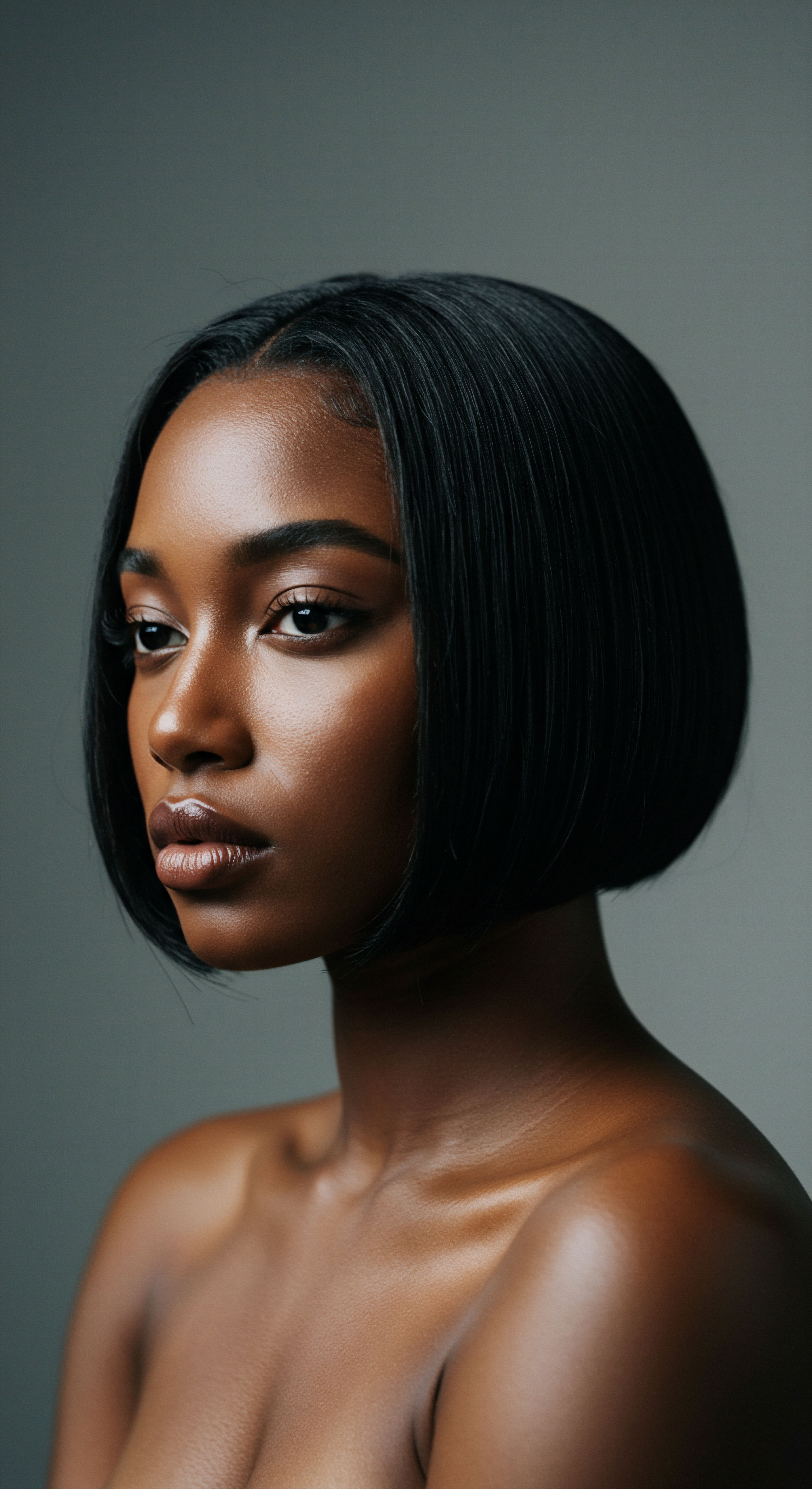
Reflection
As the last drops of wisdom from past eras settle upon our present understanding, a quiet realization emerges ❉ the pursuit of hair wellness is a continuous conversation between what has been and what can be. The historical understanding of hair, often expressed through intuitive rituals and natural ingredients, offers more than just quaint anecdotes; it provides a profound blueprint for respecting hair’s delicate biological equilibrium. We learn that true care is not about imposing external solutions, but about supporting the hair’s intrinsic ability to thrive. Perhaps the greatest lesson from these historical echoes is the gentle reminder that the most profound beauty often blossoms from harmony and a deep, knowing connection to the natural rhythms of life.
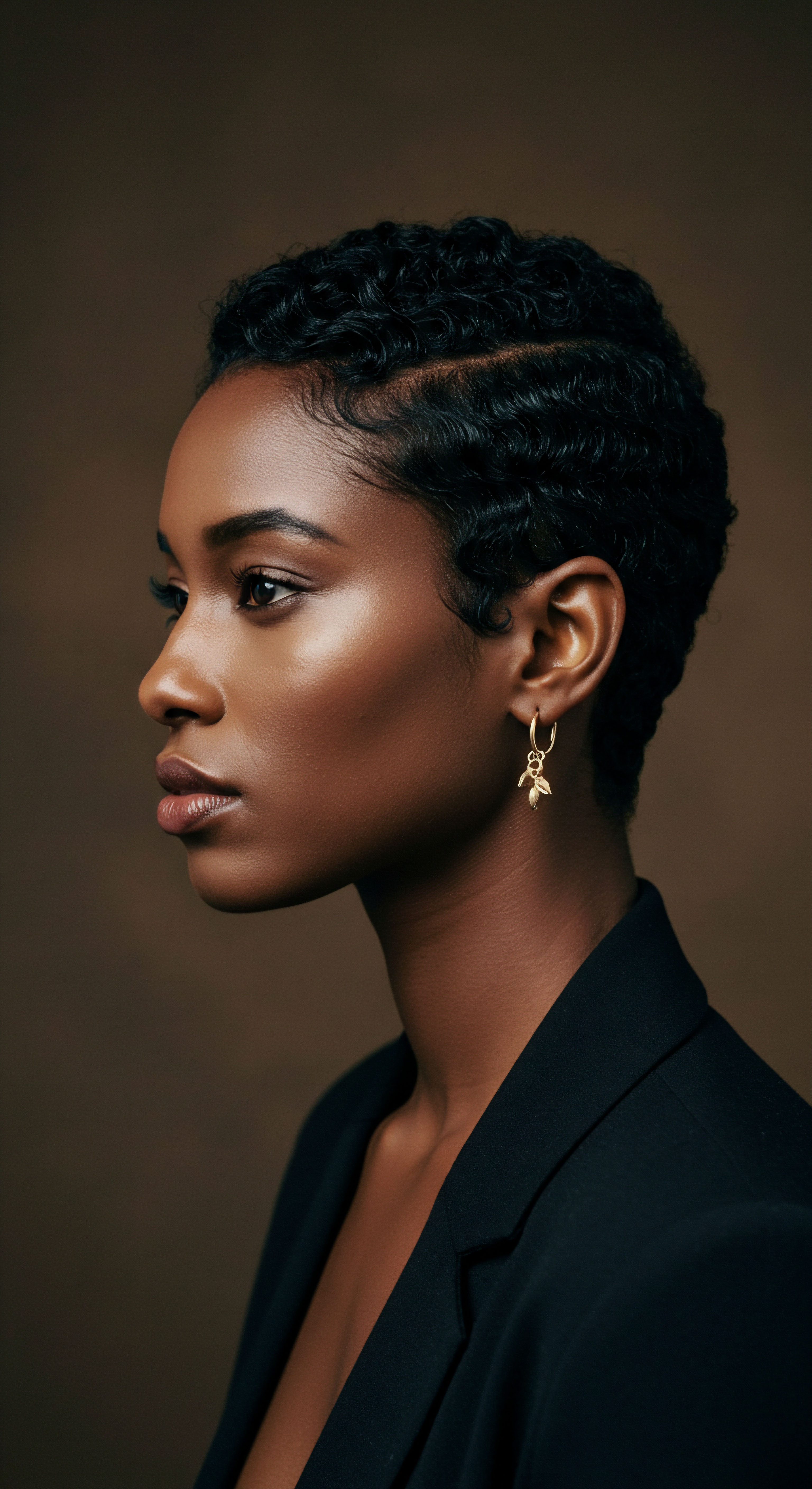
References
- Ramli, S. F. Abdul Razak, A. A. & Yasin, M. A. (2022). Fermented rice water as a cosmetic ingredient ❉ A review. Journal of Cosmetic Science, 73 (2), 125-132.
- Robbins, C. R. (2012). Chemical and Physical Behavior of Human Hair (5th ed.). Springer.
- Dias, M. F. R. (2015). Hair Cosmetics ❉ An Overview. International Journal of Trichology, 7 (1), 2-15.
- Gavazzoni Dias, M. F. R. de Almeida, A. M. & Santos, M. X. (2021). Hair and Scalp Treatments ❉ A Scientific and Practical Approach. CRC Press.
- Khumalo, N. P. & Gumedze, F. (2018). The Science of Black Hair ❉ A Comprehensive Guide to Textured Hair Care. Self-published.
- Pole, S. (2013). Ayurvedic Medicine ❉ The Principles of Traditional Practice. Singing Dragon.
- Draelos, Z. D. (2010). Hair Cosmetics ❉ An Overview. In ❉ Baran, R. Maibach, H.I. (eds) Textbook of Cosmetic Dermatology. CRC Press.